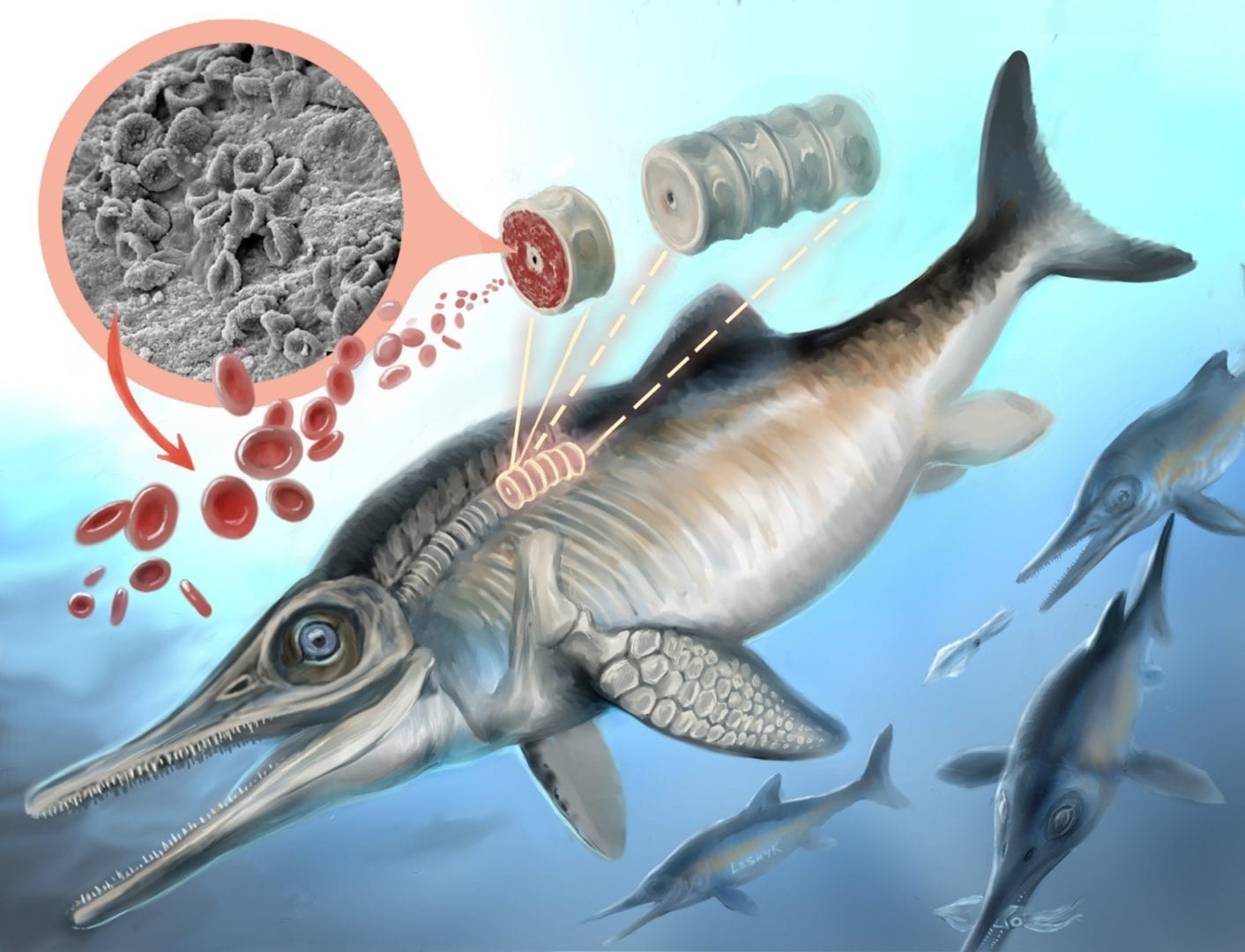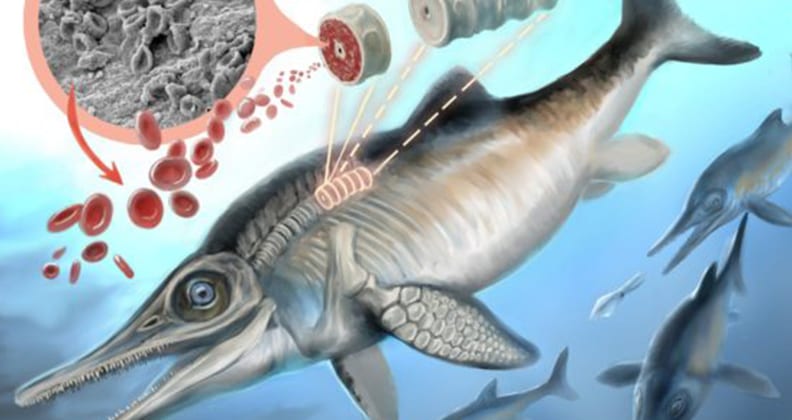The presence of well-preserved biological material found in an Early Jurassic ichthyosaur vertebra suggests that fossils preserved through carbonate concretion could play a major role in understanding the biology of extinct species, as well as evolution, according to Curtin University research published in Scientific Reports.
An interdisciplinary research team led by organic geochemist John Curtin Distinguished Professor Kliti Grice, as part of an Australian Research Council (ARC) Discovery Outstanding Research Award Fellowship, analysed a 182.7 million year old vertebra from an ichthyosaur – a large, prehistoric lung-breathing marine reptile, resembling the modern-day dolphin.
Professor Grice explained that the sample, which was collected from a cement quarry in Germany, was fossilised in a way that preserved cholesterol, red blood cells and collagen fibres.
“A carbonate concretion encapsulated the Early Jurassic period vertebra, forming a tight seal that helped protect its tissue and cellular remains from full decomposition,” Professor Grice said.
Carbonate concretions are most commonly associated with organic matter-rich mudstones, such as black shales, and are formed under highly anoxic (low oxygen) conditions.
Professor Grice and Chloe Plet, a PhD researcher at Curtin University, assessed the trabecular and cortical bones of the vertebra, where they discovered the presence of fossilised soft tissue.
“During our analyses of the sample, we discovered red blood cell structures that were up to five times smaller than those reported in most modern organisms,” Professor Grice said.
This discovery led the researchers to propose the small size of these blood cell structures was related to the ichthyosaurs evolutionary adaptation to environmental conditions.
“Ichthyosaurs evolved during a time when atmospheric oxygen levels were continuously low over a period of 70 million years,” Ms Plet said.
“We propose that small red blood cells were favourably produced by the species to provide efficient oxygen transport and diffusion. For example, modern-day mammals living at elevated altitudes with lower oxygen levels make small and abundant red blood cells.”
Professor Grice continued to explain that similar, small-sized red blood cells had been reported previously in 70 million year old dinosaur bones – creatures that would have also adapted to low oxygen levels during evolution.
“This research suggests that not only could carbonate concretions play a major role in the investigation of the palaeobiology of extinct species, but also an understanding of the evolutionary adaptation of life under different paleoenvironmental conditions,” Professor Grice said.

The full research paper, Palaeobiology of red and white blood cell-like structures, collagen and cholesterol in an ichthyosaur bone, has been published by Scientific Reports and can be found as open access at DOI:10.1038/s41598-017-13873-4
This project was supported by an Australian Research Council (ARC) grant.
The vertebra sample analysed by Professor Grice and Ms Plet was recovered from the Posidonia Shale Konservat Fossil Lagerstätte in south-west Germany, with research co-author Professor Lorenz Schwark from University of Kiel, who is also an Adjunct Professor at Curtin University.



